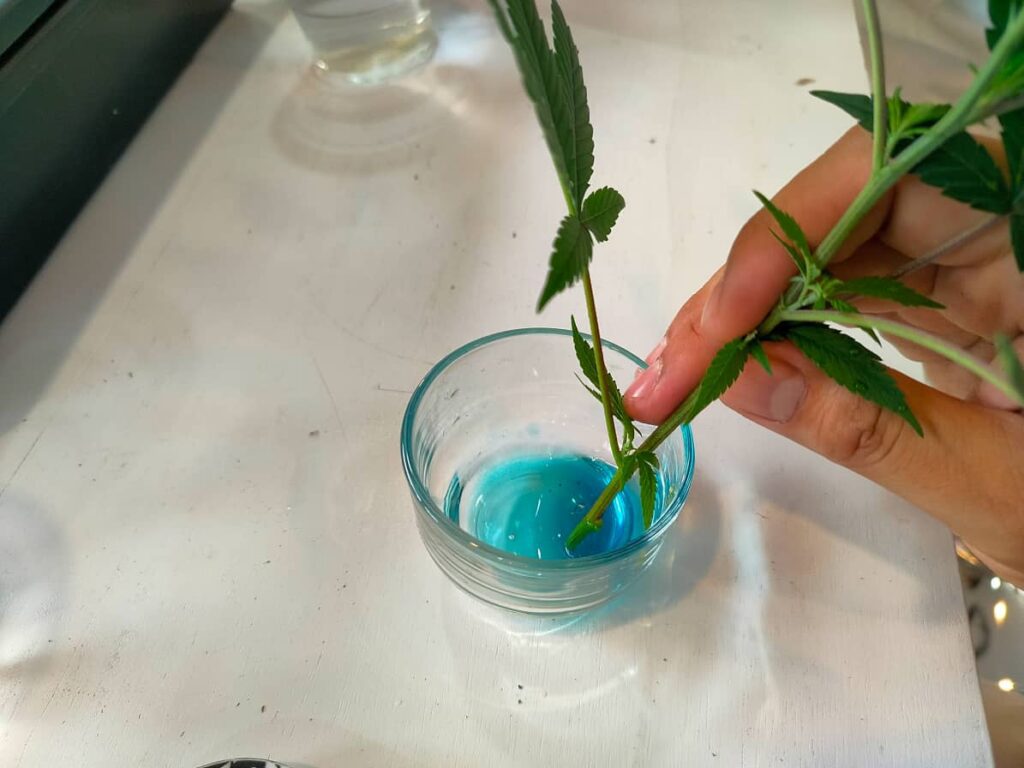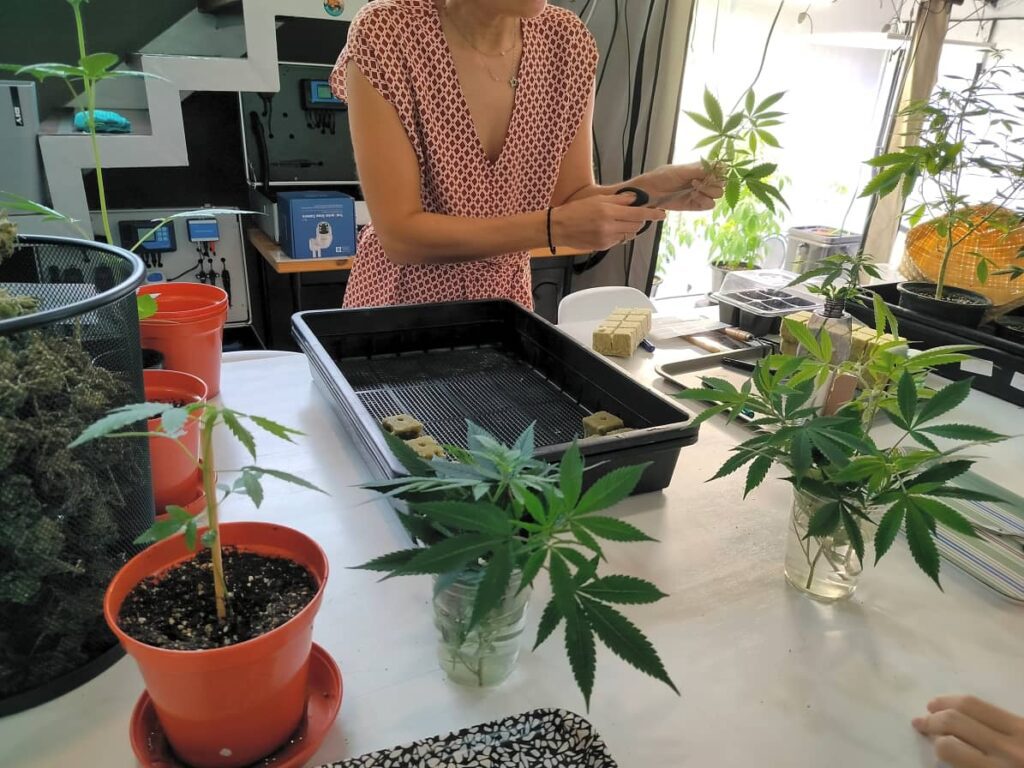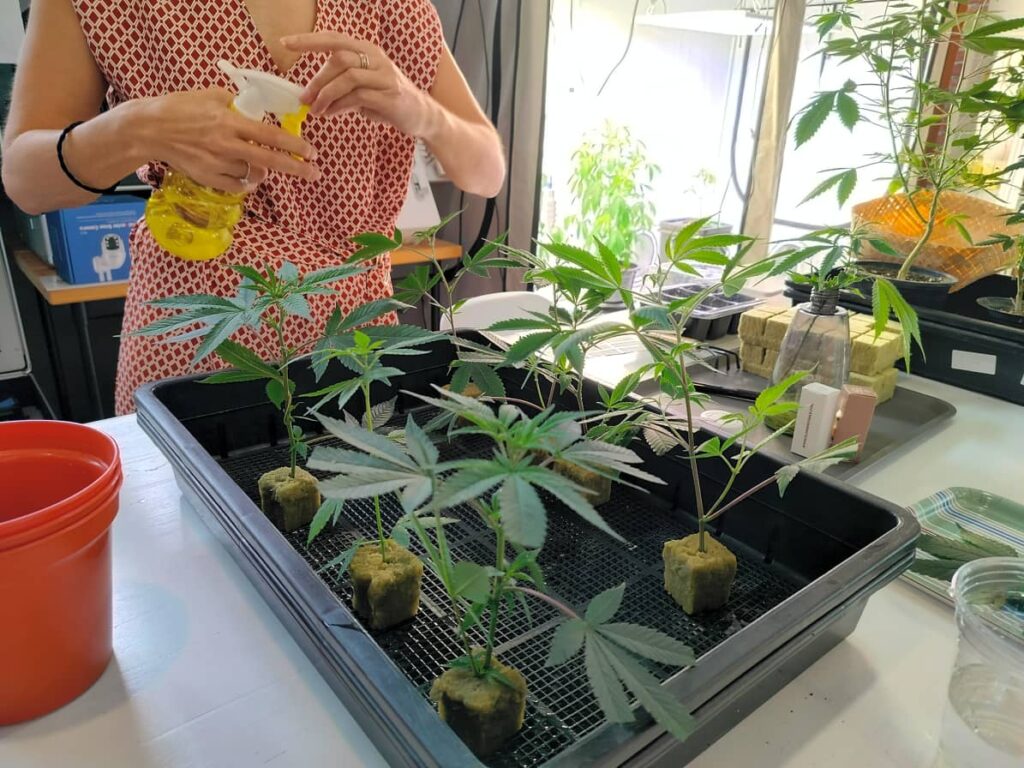Greetings, all you budding botanists and green-thumbed enthusiasts! You might wondering how to clone cannabis and ready to embark on a thrilling journey into the world of cannabis cultivation? This isn’t your typical gardening guide. Instead, we’re about to dive deep into the fascinating process of cloning a cannabis plant. Whether you’re in Thailand, where you can legally grow up to 15 plants in your home, or elsewhere, this guide will arm you with the knowledge you need to successfully clone your favorite strains. So, strap in and prepare to explore the captivating world of DIY cannabis cultivation. Let’s get started!
Selecting the Ideal Mother Plant for Cannabis Cloning
The first step in cloning a cannabis plant is to choose a healthy mother plant. This decision isn’t one to be taken lightly. You’re looking for a cannabis plant that exudes strength, health, and is free of any pests or diseases.
Look for a plant with robust stems, vibrant leaves, and a potent aroma – these are the hallmarks of a prime candidate for cloning. If you’re lucky enough to have a high-performing strain that you’re particularly fond of, that’s your golden ticket. That’s the mother plant you’ll want to select for cloning.

Preparing for Cloning
Once you’ve chosen your mother plant, it’s time to roll up your sleeves and get to work. Here’s what you’ll need:
- A sharp, sterile razor blade or scissors: Precision and cleanliness are key when making cuttings from your mother plant.
- Rooting hormone: This will stimulate root growth in your cuttings, increasing their chances of survival.
- Cloning gel: Another aid to promote root development in your cannabis cuttings.
- A rooting medium: Options include rockwool cubes or peat pellets, both excellent choices for nurturing new roots.
- A container for the cutting: This could be a simple plastic cup or a small pot, depending on what’s available and convenient for you.
- A humidity dome or plastic bag: These tools create a moist, humid environment, crucial for early root development. Aim for a humidity level between 70% and 80% and a temperature of around 72-77 degrees Fahrenheit (22-25 degrees Celsius). Roots typically start to appear within 7-14 days and are ready for transplanting when they reach about 2 inches long, usually between 10 to 20 days. Patience is key to avoid transplant shock.

Got all that? Excellent. Now let’s move on to the next step.
Taking the Cutting
This is where things get real. You’re going to take a cutting from your mother plant, and this is where your skills as a cannabis cultivator will really come into play. Here’s what you need to do:
- Find a healthy branch on your mother plant that’s at least 4-6 inches long.
- Make a clean cut at a 45-degree angle, just below a node (that’s the spot where a leaf meets the stem).
- Dip the cut end of the stem into your rooting hormone or cloning gel. This will help encourage root growth.
- Place the cutting into your rooting medium, making sure it’s inserted at least an inch deep. Gently press the medium around the stem to hold it in place.
- Cover the cutting with a humidity dome or plastic bag to help create a moist, humid environment.
Rooting the Cutting
Now comes the waiting game. You’ve taken your cutting, and now you need to give it some time to develop roots. Here’s what you need to do:
- Keep the cutting out of direct sunlight, as this can cause it to wilt. Instead, place it under a fluorescent light or grow light for 18-24 hours a day. You want to provide the cutting with enough light to encourage growth, but not so much that it becomes stressed.
- Mist the cutting regularly to keep it moist. The cutting needs to stay moist to encourage root growth. Mist it with water once or twice a day, or as needed, to keep the rooting medium damp.
- Watch for signs of stress or disease. If the cutting starts to wilt or turn yellow, it may be a sign of stress or disease. Check the roots for any signs of rot or infection, and remove any affected parts immediately. It’s also important to keep the cutting away from other plants, as it may be more vulnerable to disease and infection while it’s rooting.

Transplanting the Cloned Plant
The moment of truth has arrived. Your cutting has developed a strong root system, and now it’s time to transplant it into a larger container or your garden. Here’s what you need to do:
- Wait for the cutting to develop a strong root system before transplanting it. This can take anywhere from 1-2 weeks, depending on the strain and the conditions.
- Choose a container that’s appropriate for the size of your plant. If you’re transplanting into a pot, make sure it has drainage holes to prevent water from pooling and causing root rot.
- Fill the container with a high-quality soil or soilless mix. You want to provide your plant with the nutrients it needs to thrive.
- Make a hole in the soil that’s slightly larger than the root ball of your cloned plant.
- Gently remove the plant from the rooting medium, taking care not to damage the delicate roots.
- Place the plant into the hole, making sure it’s at the same level as it was in the rooting medium. If you bury the stem too deep, it can lead to stem rot and other issues.
- Pack the soil gently around the plant, making sure it’s secure and stable.
- Water the plant thoroughly, making sure the soil is evenly moist but not waterlogged. From here on out, you’ll need to keep a close eye on your plant and make sure it’s getting the right amount of water and nutrients.

And there you have it, folks! The intricate process of cloning a cannabis plant, all laid out for you in meticulous detail. Now, it’s time for you to put your newfound knowledge to good use. Remember, always respect the plant and use it responsibly.
As we conclude our guide to cloning cannabis, why not continue your learning journey with our weekend growing classes at Tropicanna Dispensary? Held every Sunday and Tuesday from 11 am to 1 pm, these classes offer hands-on experience and expert guidance, catering to all levels of expertise. Join us to deepen your understanding, refine your techniques, and connect with a community of fellow growers. We look forward to seeing you there!
Happy cloning!



